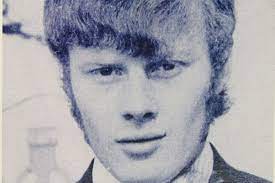Hugh Gerard Coney, known as Gerard by his family and closest friends, was shot dead by a British soldier in 1974 while he was attempting to escape from Long Kesh, where he was being held without charge along with hundreds of others. The inquest into his death, which resumed last week, is being heard before Coroner Anne-Louise Toal and a jury in Newry Courthouse.
The court has now heard all the available evidence from civilian witnesses – former detainees who participated in the fatal escape and one of the priests who gave the last rites to Gerard’s dead body. Their accounts were harrowing and consistent with those heard last week.
Some witnesses were called to give oral evidence in the witness box. The court agreed to hear the evidence of other witnesses under Rule 17, that is, by reading their statements and adopting them as evidence, with the option to call the witnesses to give oral evidence in due course if needed. This agreement was reached in order to facilitate the completion of the inquest as scheduled, as well as to avoid repetitive questioning that, in many cases, exceeded the issue of relevance for the inquest as ruled by the Coroner. Thus, not everything included in those accounts was accepted by all the Properly Interested Persons (PIPs) in court, but rather accepted to be heard by the jury and therefore adopted as evidence.
Francis McCann was the first witness to give evidence this week. He was an internee in Long Kesh in 1974 and participated in the attempted escape like the rest of the civilian witnesses in this inquest. He made it as far as the barbed wire in which Coney was shot dead. Mr McCann described that two shots were fired by the British Army when the escapees were “bunched up” together at the fence, trying to get through, and no warnings had been given.
The witness then recounted that he and several others were captured and brought to the road, where they were ordered to lie face down, spread-eagled. At the same time, British soldiers made derogatory comments about Coney’s death, such as “Who certified that cunt dead?” and “I hope the bastard is dead; I wouldn’t like to run about with a face like that”. British soldiers moved Coney’s body to the road by this stage and left him beside the captured escapees. During this time, British soldiers started beating and kicking the detainees, as well as setting the dogs on them – the witness was punched, kicked and bitten. Mr McCann was then put in a van with several other detainees and one of the dogs and brought inside the camp, where prison wardens awaited and made them run the gauntlet. He was injured during the ordeal and had to be brought to the prison hospital. The witness said, “It was a traumatic experience in which a man lost his life. British soldiers were rejoicing about having killed one of us.”
He was convicted of the attempted escape and sentenced to 9 months, which kept him in prison months after internment was ended. That conviction, however, was quashed in 2022 because the courts found that his interment order was unlawful in the first place.
The account of the rest of the civilian witnesses was consistent with the previous ones – Brian Maguire, John Francis Walsh, Brian Morgan, and Brendan Shannon, who was hit by one of the bullets and injured, recalled that no warnings had been given before the shooting and that they all were beaten up by British soldiers and prison officers when captured.
Father Emmet Dagens, who has passed away since being interviewed by the Coroner’s investigator, recounted that his brief visit to Long Kesh that morning had been “an awful and frightening experience” which led him to take a break from his parochial duties and seek refuge at his family home. Father Dagens and another priest had been called to go to Long Kesh on the night of the incident, where they were shown the dead body of Gerard lying in a hut. Father Dagens said: “I would’ve expected more respect to be shown to a dead body.” We believe this was at least the second location where Gerard’s body was moved to by British soldiers after they shot him dead, thus interfering with the investigation that should have followed.
Mr Shannon’s statement read, “I do remember that the soldiers were having a good time in regard to having shot someone dead.” He also said that he was a child when he was interned, so he tried to escape as soon as the opportunity arose – “I just wanted to go home”.
Brian Morgan described the escape in detail, including his and his comrades’ feelings as they exited the tunnel they carved from Cage 5. He explained how they hugged each other as they made their way out because they could “smell freedom”. The closer they were from the outside, he said, “You could start seeing colour, whereas in Long Kesh, everything was grey”. He was beside Coney and Shannon when they were shot, but he managed to cut the wire and made his way out, catching up with other escapees. They were captured later on and brought back to the camp, where they were received with “severe brutality” by the Governor and other prison staff. “I thought I was going to die.”
The inquest continues with the evidence from former military personnel.











